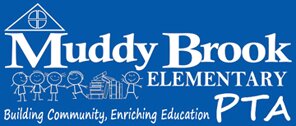Teaching Kids the Value of Originality: How Parents Can Support Academic Integrity
As children navigate school, they are constantly exposed to information from books, the internet, and peers. While technology has made learning easier, it has also made copying someone else’s work tempting. Teaching kids the value of originality is crucial. When children understand the importance of creating their own ideas, they build confidence, critical thinking skills, and integrity that will last a lifetime.
Parents play a pivotal role in reinforcing these values at home. Academic integrity isn’t just a school rule—it’s a life lesson. By modeling honesty and discussing the consequences of plagiarism, parents set the foundation for responsible learning habits.
Start Conversations Early
One of the most effective ways to teach children about originality is to start conversations early. Even young children can understand concepts like fairness, honesty, and respect for others’ work. Simple discussions about why it’s wrong to copy a friend’s homework or borrow text from a book without permission lay the groundwork for deeper understanding as they grow older.
Parents can also encourage curiosity. Asking questions like, “What do you think about this idea?” or “How would you explain this in your own words?” helps children practice expressing their thoughts independently. The goal is to show that original ideas are not only acceptable—they are valuable.
Practical Steps for Supporting Academic Integrity
Encourage Creative Thinking:
Children should be given opportunities to express themselves through storytelling, essays, projects, or even casual discussions. Open-ended questions and problem-solving tasks encourage them to think critically and form unique perspectives, reducing the temptation to rely on others’ work.
Explain Plagiarism in Age-Appropriate Terms:
It is important for kids to understand what plagiarism is and why it matters. Younger children can learn through relatable examples, like copying a friend’s homework or taking lines from a website without permission. Older children can benefit from more detailed discussions about citing sources, paraphrasing, and respecting intellectual property.
Use Digital Tools for Learning About Originality:
Introducing children to safe and educational plagiarism-checking tools can make the concept tangible. Platforms like Originalityreport.com allow students to compare their writing against other sources and see how to properly credit ideas. This hands-on approach helps children internalize the importance of originality in a practical way.
Praise Effort and Thoughtfulness:
Children are more likely to value originality when effort is recognized, not just grades. Complimenting unique ideas, thoughtful analysis, and creative approaches encourages a mindset where honesty and personal expression are celebrated.
Lead by Example:
Children absorb lessons by watching adults. Parents can demonstrate academic integrity by citing sources in conversations, sharing original ideas, and discussing how they approach problem-solving or research. This modeling reinforces the behaviors they hope to see in their children.
Making Originality Part of Everyday Life
Academic integrity doesn’t have to be confined to schoolwork. Parents can encourage originality in everyday life. Cooking, art, science experiments, and even casual storytelling can all become opportunities for children to express themselves independently.
Family activities that emphasize collaboration and creativity can also reinforce these lessons. For example, creating a family storybook, designing a small project together, or having discussions where everyone contributes ideas ensures children understand that their voice matters.
Long-Term Benefits of Fostering Originality
Children who grow up understanding and valuing originality develop critical skills that extend beyond the classroom. They gain confidence in their abilities, become more resilient when faced with challenges, and are better prepared for higher education and professional environments.
Moreover, learning academic integrity early fosters ethical decision-making in all aspects of life. Children internalize that honesty and personal responsibility matter, not only for grades but for personal growth and social trust.
When children embrace originality, they contribute unique ideas to discussions, projects, and problem-solving efforts. By teaching these values early, parents ensure that ethical behavior and creativity become natural habits rather than imposed rules.
Conclusion
Teaching kids the value of originality is a multifaceted effort that combines conversation, guidance, encouragement, and practical tools. Parents are the first and most influential teachers in this journey. By fostering curiosity, modeling integrity, and providing resources, parents equip their children to navigate schoolwork honestly and confidently.
Ultimately, children who learn to value their own ideas not only succeed academically but also carry lifelong principles of honesty, responsibility, and creative thinking. Supporting originality today prepares them for a future where their ideas and integrity will make a meaningful difference.
